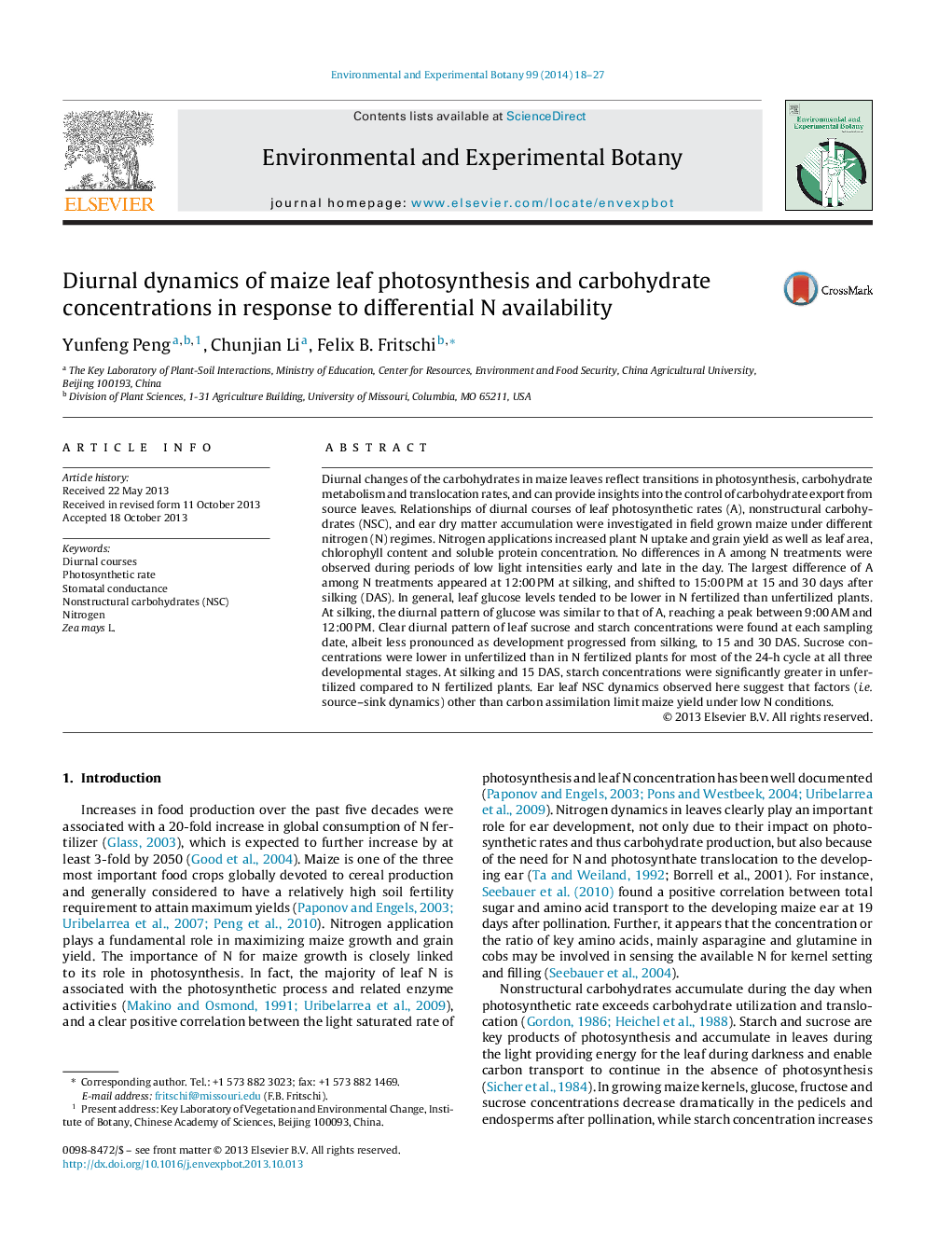| Article ID | Journal | Published Year | Pages | File Type |
|---|---|---|---|---|
| 6388910 | Environmental and Experimental Botany | 2014 | 10 Pages |
Abstract
Diurnal changes of the carbohydrates in maize leaves reflect transitions in photosynthesis, carbohydrate metabolism and translocation rates, and can provide insights into the control of carbohydrate export from source leaves. Relationships of diurnal courses of leaf photosynthetic rates (A), nonstructural carbohydrates (NSC), and ear dry matter accumulation were investigated in field grown maize under different nitrogen (N) regimes. Nitrogen applications increased plant N uptake and grain yield as well as leaf area, chlorophyll content and soluble protein concentration. No differences in A among N treatments were observed during periods of low light intensities early and late in the day. The largest difference of A among N treatments appeared at 12:00Â PM at silking, and shifted to 15:00Â PM at 15 and 30 days after silking (DAS). In general, leaf glucose levels tended to be lower in N fertilized than unfertilized plants. At silking, the diurnal pattern of glucose was similar to that of A, reaching a peak between 9:00Â AM and 12:00Â PM. Clear diurnal pattern of leaf sucrose and starch concentrations were found at each sampling date, albeit less pronounced as development progressed from silking, to 15 and 30 DAS. Sucrose concentrations were lower in unfertilized than in N fertilized plants for most of the 24-h cycle at all three developmental stages. At silking and 15 DAS, starch concentrations were significantly greater in unfertilized compared to N fertilized plants. Ear leaf NSC dynamics observed here suggest that factors (i.e. source-sink dynamics) other than carbon assimilation limit maize yield under low N conditions.
Related Topics
Life Sciences
Agricultural and Biological Sciences
Ecology, Evolution, Behavior and Systematics
Authors
Yunfeng Peng, Chunjian Li, Felix B. Fritschi,
